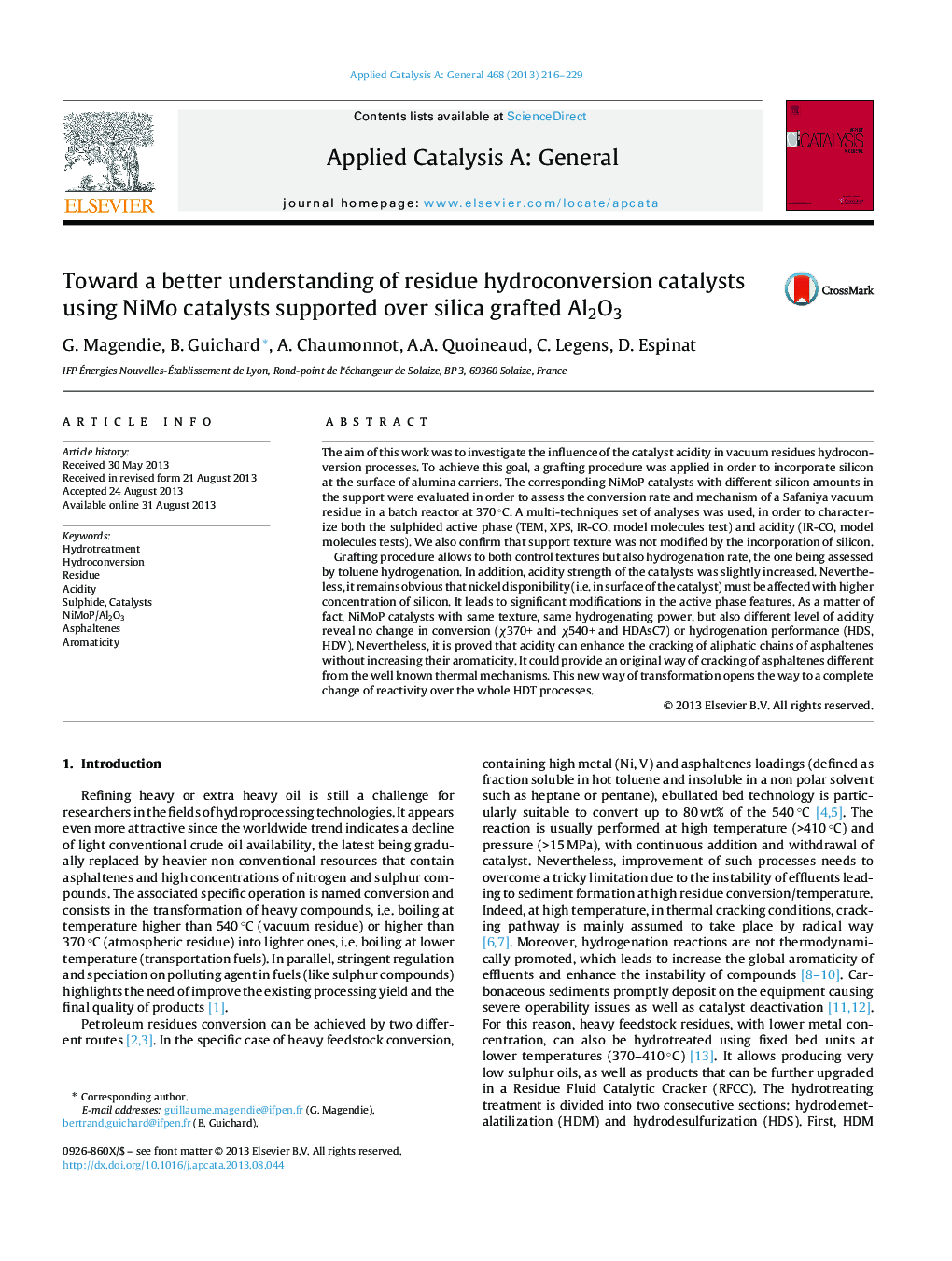| Article ID | Journal | Published Year | Pages | File Type |
|---|---|---|---|---|
| 40253 | Applied Catalysis A: General | 2013 | 14 Pages |
•NiMoP/SiO2–Al2O3 grafted catalysts synthesized and characterized.•Grafting procedure allows to maintain textures and consecutive hydrogenating phase.•Catalysts exhibit various acidity levels, but same HYD and texture.•Catalysts were tested for hydroconversion with a vacuum residue.•Acidity enhances cracking of aliphatic chains of asphaltenes.
The aim of this work was to investigate the influence of the catalyst acidity in vacuum residues hydroconversion processes. To achieve this goal, a grafting procedure was applied in order to incorporate silicon at the surface of alumina carriers. The corresponding NiMoP catalysts with different silicon amounts in the support were evaluated in order to assess the conversion rate and mechanism of a Safaniya vacuum residue in a batch reactor at 370 °C. A multi-techniques set of analyses was used, in order to characterize both the sulphided active phase (TEM, XPS, IR-CO, model molecules test) and acidity (IR-CO, model molecules tests). We also confirm that support texture was not modified by the incorporation of silicon.Grafting procedure allows to both control textures but also hydrogenation rate, the one being assessed by toluene hydrogenation. In addition, acidity strength of the catalysts was slightly increased. Nevertheless, it remains obvious that nickel disponibility (i.e. in surface of the catalyst) must be affected with higher concentration of silicon. It leads to significant modifications in the active phase features. As a matter of fact, NiMoP catalysts with same texture, same hydrogenating power, but also different level of acidity reveal no change in conversion (χ370+ and χ540+ and HDAsC7) or hydrogenation performance (HDS, HDV). Nevertheless, it is proved that acidity can enhance the cracking of aliphatic chains of asphaltenes without increasing their aromaticity. It could provide an original way of cracking of asphaltenes different from the well known thermal mechanisms. This new way of transformation opens the way to a complete change of reactivity over the whole HDT processes.
Graphical abstractFigure optionsDownload full-size imageDownload high-quality image (148 K)Download as PowerPoint slide
